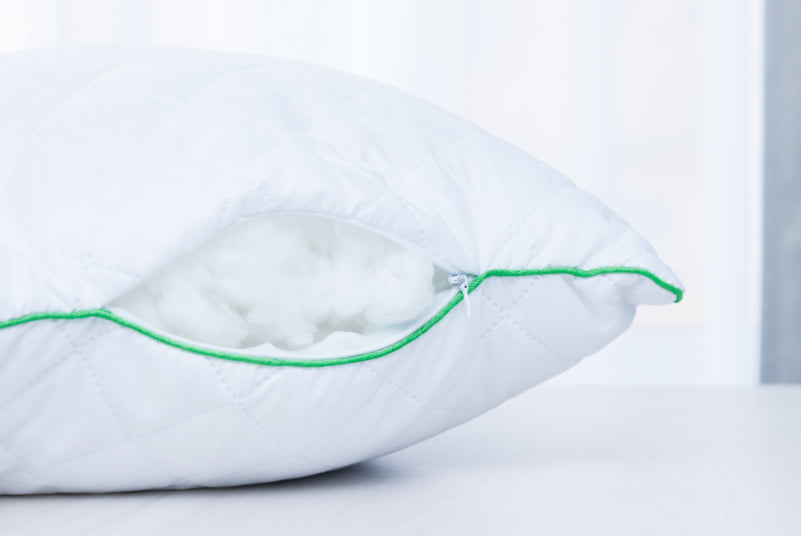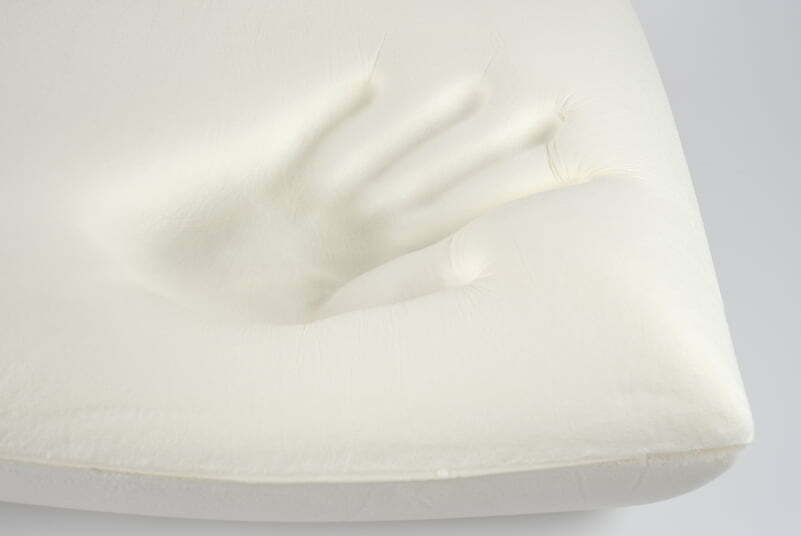
Pillow Advice
– Advice on finding the best pillow for you
Bed Buyers’ Guide
If you suffer with neck and shoulder pain, you may find your pillow’s the culprit.
Having the right pillow is so important to keep the head/neck and spine in correct alignment when sleeping, whether you are a side sleeper, back sleeper or front sleeper. The wrong pillow can result in an uncomfortable night.
Pillows come in a range of different shapes and sizes, including pre-shaped ones that support your head and neck, as well as a variety of fillings. A good pillow should hold your head in the correct alignment. One that’s too soft will allow the head to flop, curving the neck. One that’s too hard will give you a crick in the neck.
Top tip – if staying away from home, take your own pillow with you, if you can.
Types of pillow
Pillows come filled with a choice of fillings – goosedown, duckdown, feather, fibre filled, and visco-elastic, latex or polyurethane foam, gel – and any number of combinations of these.

Polyester
The most popular are the polyester filled type – available in a variety of feels from very soft to very firm – and a broad range of prices. Better quality polyester pillows can be machine-washed. Branded fibres are often an assurance of quality.

Down/feather pillows
Down/feather pillows offer a luxurious give and excellent durability. Many also wash very well. The softness – and cost – will go up in proportion to the percentage of down it contains. Check on the type of feathers used: chicken feathers are straight and have to be artificially curled – a treatment which eventually wears off. They might also smell!

Foam and latex pillows
Foam and latex pillows tend to be firm with a definite bounce to them. They hold their shape very well and are considered hypo-allergenic. However it is recommended that special barrier covers are also used by anyone with asthma or other breathing problems or eczema.
Pillow dimensions
Pillow dimensions can vary, but the standard size is between 71-74cm x 46-48cm (28-29in x 18-19in). You may prefer the square, continental style pillow, 65 x 65cm (26in square).

What to look for when buying a pillow
It is a good idea to invest in quality pillows. A good one should hold your head in the correct alignment – that is, in the same relation to your shoulders and spine as if you were standing upright with the correct posture – and be tucked well into the neck and shoulder to support your head fully.
The thickness and number you need depend on your body shape and your preferred sleeping position. You will need a thicker pillow (or two thinner ones) if you sleep on your side rather than if you sleep on your back.
When to change your pillow
Because pillows affect your sleeping posture and lie next to your skin and your nostrils, it’s a good idea to invest in quality pillows and replace them at least every two or three years for a healthy sleeping environment.
When they have lost their ‘loft’ (height) and become lumpy, discoloured, or misshapen they are definitely ready for replacement.
Remember, an old, unwashed pillow could also contain as much as 10% of its weight in skin scale mould dead and living dust mites and their allergen-laden droppings! If your pillow is natural (such as feathers) or polyester-filled, wash it two or three times a year. If it’s a foam pillow, clean it every two to three months.
When your pillow has come to the end of its useful life and needs replacing, instead of throwing it away, you could use it as a kneeling pad when doing housework, gardening or DIY.

The best pillows for you
As with shopping for a new bed, you should try out different types of pillows before making your final decision.
If possible you should try out the pillow (or pillows) on a bed where you can lie down on your side. Ask someone to check if your neck and upper back are in a straight line. The pillows should be tucked well into the neck and shoulder to support the head fully.
Too many pillows will cause the spine to curve upwards and the skin to crease on the top of your neck. Too low or thin a pillow will make the spine curve downwards and cause a crease on the underside of the neck.
Remember, it’s fine to sleep on your back or sides but if possible avoid sleeping on your tummy, which puts a lot of strain on your neck as it is permanently twisted throughout the night.
It’s a matter of personal choice whether you prefer to achieve the correct head and neck support with one or more pillows – but they should be able to retain their shape and give you constant support throughout the night.
Specially moulded neck care pillows are usually made from foam or latex and are often intended for use in conjunction with another, softer pillow. Lumbar support pillows are also available to prop you up comfortably in bed.
To top it off – mattress toppers
Overlays and toppers are mostly used to soften the feel of a mattress by adding extra layers of cushioning. Generally non-sprung, they may be made of a variety of materials – polyester fibre, latex, visco-elastic or other foams or even feathers. The choice is entirely subjective. Toppers are not a substitute for correct support – you’ll need a mattress of the right tension. They also aren’t a substitute for replacing an old, worn-out bed – any impression of improved comfort will probably be short-lived.
Some modern mattress styles include a fixed topper, often on styles that have been designed to eliminate the need for turning.
Previous section
Bed bases explained
Next section
Caring for your bed

